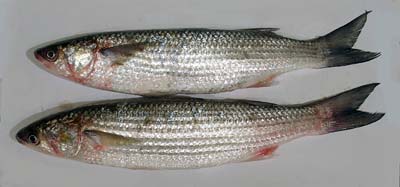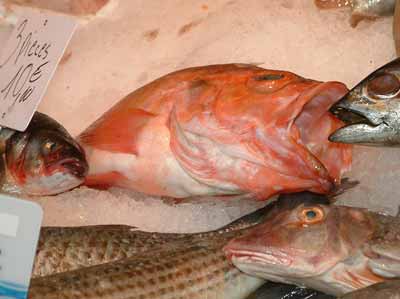
Grey mullet, the commonest and largest of the grey mullet (US: striped mullet) family. It is a silver, shoal-living fish pointed with dark grey which feeds on seaweed and plankton near the muddy bottom in estuaries and coastal waters. This can effect its flavour. However, a good grey mullet, caught in clean water, is round-bodied and has creamy white flesh and good flavour with good keeping capabilities. It must be thoroughly scaled before eating. Varieties are found all over the world. The roe is used for taramasalata, botargo, boutargue.
Thin-lipped grey mullet (US: striped mullet). It has a pointed snout giving it the appearance of thin lips, hence its name. It has a golden sheen.

Grey mullet, the commonest and largest of the grey mullet (US: striped mullet) family. It is a silver, shoal-living fish pointed with dark grey which feeds on seaweed and plankton near the muddy bottom in estuaries and coastal waters. This can effect its flavour. However, a good grey mullet, caught in clean water, is round-bodied and has creamy white flesh and good flavour with good keeping capabilities. It must be thoroughly scaled before eating. Varieties are found all over the world. The roe is used for taramasalata, botargo, boutargue.

A name for rascasse, red scorpion fish, in the Balearics. A fish similar to a gurnard, mainly red or orange in colour, with a huge, ugly head and poisonous spiny dorsal fins. The large scaly head is inedible. However, this well-flavoured fish is most famous as an indispensable ingredient of bouillabaisse. It is found in deep waters throughout the Mediterranean and as far north as Brittany. Large fish may be baked, providing firm white flesh.
Snails grilled or barbecued and served with aïoli and bread. It is traditionally served at a Catalonian feast of the same name on Easter Monday.